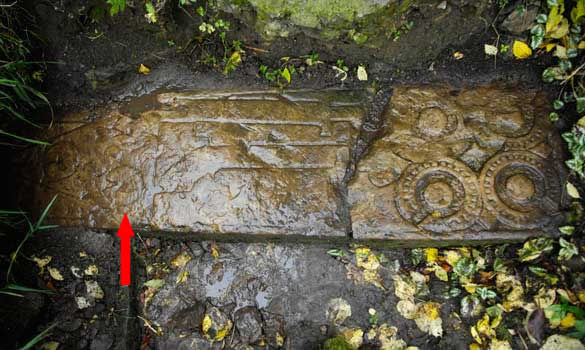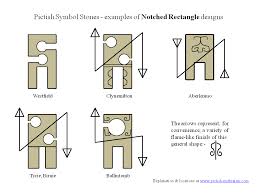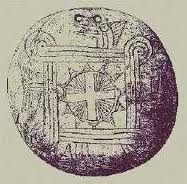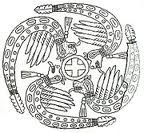It looks like you're using an Ad Blocker.
Please white-list or disable AboveTopSecret.com in your ad-blocking tool.
Thank you.
Some features of ATS will be disabled while you continue to use an ad-blocker.
share:
reply to post by muzzleflash
Thanks Muzzleflash, it's getting stranger than I thought!
I'm about halfway through your thread, by the way!
The encouragement is sincerely appreciated.
B x
Thanks Muzzleflash, it's getting stranger than I thought!
I'm about halfway through your thread, by the way!
The encouragement is sincerely appreciated.
B x
OK, The Diagram below is from the website Midnight science "Ancient matters":
Author (Dr?) Derek Cunningham
Analysis of the Alerlemno No3 pict stone.

Its an ancient starmap drawn by the picks as off that timeline,
Opens up a new way off thinking,
Why where the Picts/Celts so fascinated in starmapping.
Author (Dr?) Derek Cunningham
Analysis of the Alerlemno No3 pict stone.

Its an ancient starmap drawn by the picks as off that timeline,
Opens up a new way off thinking,
Why where the Picts/Celts so fascinated in starmapping.
reply to post by foxhound2459
Good find!!!!
I've got to go out, but I'm coming straight back to read the article!
Midnight Science Journal
Good find!!!!
I've got to go out, but I'm coming straight back to read the article!
Midnight Science Journal
reply to post by foxhound2459
Dr Cunningham seems cautious from the abstract I read:
Not in itself a bad thing. However he also says:
He suggests that the ancestors of the Picts were part of a global civilisation 15000 years ago? And furthermore he suggests that this astronomical knowledge could have been commonplace up until the 10th century AD, about 1000 years ago.
So, what happened to this knowledge in that period? Did it go underground, out of site of the common people?
Ooh, and also:
Yes! Agreed, Dr.!
Dr Cunningham seems cautious from the abstract I read:
The Invereen stone does appears to be an accurate representation of both earth and the moon. Specifically the drawing suggests the Picts were aware of apogee and perigee, and the dimension of the moon relative to earth, and many of the drawn alignments do appear to be astronomical in nature.
However, by itself, the Invereen Stone does not produce sufficient data to confirm that the symbols present on the stone are a type of early proto-writing. Further studies of other Pictish stones are required, and if all studied stones are consistent, then and only then can it be argued that the Pictish drawings were made by astronomers.
Not in itself a bad thing. However he also says:
The recent discovery that many ancient archaeological sites all exhibit the same astronomical data has recently been used to confirm the existence of a global civilization circa 15,000 years ago (1). This civilization may have been centered at what is now known as the Gulf of Tonkin, in Asia (1).
Astronomical artwork, the oldest of which is circa 70,000 years old (1) is constructed using the concept of converting standard astronomical values to a series of linear lines drawn at angles equal to the “astronomical value”. In other words, rather than “writing” the astronomical value, the astronomical value is “drawn”. This conversion does not consider the units employed. Thus values measured in years are treated in exactly the same as those that are measured in days. Angular astronomical data is naturally presented with no conversion of units.
Though it would appear that this approach would create an almost infinite numerous astronomical angles, it is found that the range of data employed is limited to a very small range of very specific values (1-6). Typically the astronomical values used are those that center around the calculation of time and the prediction of eclipses.
He suggests that the ancestors of the Picts were part of a global civilisation 15000 years ago? And furthermore he suggests that this astronomical knowledge could have been commonplace up until the 10th century AD, about 1000 years ago.
So, what happened to this knowledge in that period? Did it go underground, out of site of the common people?
Ooh, and also:
Overall Pictish artwork can be divided into three main groups. The first group are abstract, geometric designs. These are typically well defined. The second group is that of animals which perhaps represent the nordic constellations.
Yes! Agreed, Dr.!
edit on 4-2-2014 by beansidhe because: Just noticed confirmation of a theory!
reply to post by beansidhe
So, what happened to this knowledge in that period? Did it go underground, out of site of the common people?
If I recall the Druids had the habit off committing all there knowledge to memory and not recording it in a journal,
And of course there the Knights Templers angle to be considered, Early censorship from the Vatican ?
So, what happened to this knowledge in that period? Did it go underground, out of site of the common people?
If I recall the Druids had the habit off committing all there knowledge to memory and not recording it in a journal,
And of course there the Knights Templers angle to be considered, Early censorship from the Vatican ?
edit on 4-2-2014 by foxhound2459 because: Merlot brain.
reply to post by foxhound2459
And the Knights Templars lead us straight back to...Rosslyn chapel.
No one ever has discovered what's buried there, have they?
This is certainly odd.
So what are we saying?
It is probable that the pictures on the stones mean something.
It is possible that the Picts were the indigenous people of Scotland.
it is probable that the stones were meant to convey information.
It is possible that the information was astronomical.
It is possible that the information was suppressed?
It is possible that there is masonic/templar connection?
And the Knights Templars lead us straight back to...Rosslyn chapel.
No one ever has discovered what's buried there, have they?
This is certainly odd.
So what are we saying?
It is probable that the pictures on the stones mean something.
It is possible that the Picts were the indigenous people of Scotland.
it is probable that the stones were meant to convey information.
It is possible that the information was astronomical.
It is possible that the information was suppressed?
It is possible that there is masonic/templar connection?
Apologies for the length of this quote, but here is an interesting story:
www.sacredconnections.co.uk...
Curiously, twenty-two 'mason-marks' are to be found on the stonework of Rosslyn Chapel, and twenty-two is also the number of the Greater Arcana (the Great Secrets) of the Tarot, which in turn may relate to the twenty-two letters of the cabalistic Hebrew alphabet. Could this suggest twenty-two steps of initiation? This notion is supported by Basil Ivan Rakoczi, who states: "The Gypsy Master teaches that the Greater Arcana or Trumps Major of the Tarot represent the twenty-two steps upon the way of Initiation." (The Painted Caravan: Penetration into the Secrets of the Tarot Cards, 1954). Further, commenting on the trumps card in the Tarot, an American researcher, Margaret Starbird, writes: "It was these trumps that in the original decks illustrated the actual tenets and history of the hidden Church of the Grail." (The Woman with the Alabastar Jar, 1993)
In The Painted Caravan, Rakoczi further relates: "But what is this word, Tarot? Is its root to be found in the name of the Tinker's secret language, the Shelta Thari, which was discovered by Charles Godfrey Leland and was, after much scholarly research by George Sampson, proved to be a Q-Celtic language; for, though the Tinker is decried by his brother Gypsy, he is, it is now thought, a descendent of ancient dispossessed land owners, the Picts, who, in turn, had inter-married with Phoenicians and had equally their roots (perhaps intertwined with those of the Gypsies) in the Orient?"
In the light of this possible pictish association it may be pertinent to note that according to the researches of Father Richard Hay (born 1661), the Rosslyn historian, the original founding of the site known as Roslin was by a Pict named Asterius about the end of the 2nd century A.D. Asterius would most likely have been a member of the Pictish royal lineage, and his daughter Panthioria, almost certainly a Pictish Princess, married the Scots king Donaldus (reigned 199-216 A.D) who, according to the old Scots Chronicles, was the first Christian Scottish King. In John Monipennie's summary of the ancient Scots Chronicles, first published in 1612, is a reference to "Donaldus Primus, the first Christian king of Scotland….This king Donaldus coined gold and silver, and embraced the Christian faith." It seems likely that Panthioria may also have embraced the Christian faith at that time. Prior to the reign of Donaldus Primus several Scottish kings had married women from the Pictish royal lineage some of whom were daughters of Pictish kings. So there is good reason to suppose that King Donaldus would have married into the Pictish royal lineage.
There was a strong gypsy presence at Roslin during the Middle Ages under the patronage of the St. Clair (Sinclair) family. The gypsies were called "Egyptians" and, like the Celtic Gael, they were credited with psychic abilities or 'second sight', which the Australian aboriginals call 'sacred sight'. According to Basil Ivan Rakoczi: "The fact is that the Gypsies have wandered from the beginning of time and the gift of clairvoyance has always been theirs. They did not steal the esoteric wisdom of the Tarot in Egypt or anywhere else. Rather, as one civilisation after another fell and, later, as the pagan cults became the object of Christian persecution, their dying priesthoods deposited the sacred lore in the hands of the Gypsies who undertook to travel on with it, to hide it and only to transmit it to the trustworthy. Who would suspect a mere Gypsy of possessing the accumulated wisdom of Chaldea and Egypt, or of the northern Druids, or of holding the Yoga teachings of the East in his head? So the Gypsy tribes became the repositories for all that wisdom which was denounced as heretical by the established order of the day. The Gypsy took over the wisdom of the Gnostic, the Montanist, the Donatist and the Manichean, ascending the heresiarchical ladder of experimental mysticism to mediaeval sects such as the Cathars, the Patarini and the Bogomils who, in turn, produced the creed which threatened to change completely the whole face of Europe." (The Painted Caravan). If such arcane knowledge was held within the gypsy tribes, then perhaps the St. Clairs of Roslin were drawing upon this for their own esoteric purposes and agenda; hence their especial patronage to large numbers of gypsies living in Roslin Glen.
www.sacredconnections.co.uk...
I've just dropped in on this thread in passing, and I don't understand why the Templars have been brought in to this topic.
The Templars are much later in time- they are an offshoot of the crusades.
So I don't see how Templar activity could overlap with the important period in the life of these stones.
ED; Ah- or is the argument that they inherited knowledge from them?
The Templars are much later in time- they are an offshoot of the crusades.
So I don't see how Templar activity could overlap with the important period in the life of these stones.
ED; Ah- or is the argument that they inherited knowledge from them?
edit on 4-2-2014 by DISRAELI because: (no reason given)
reply to post by DISRAELI
Hi Disareli
To be honest, you've caught us in the middle of a sort of 'thought soup' where numerous things keep popping up. We surmised that maybe, the Pictish V-rod and crescent looked a bit like the present day Mason's sign, and so were led to Rosslyn Chapel, which as it turns out has a lengthy Pict history, prior to the chapel's erection.
We think the Pict stones show detailed astronomical knowledge, and that these are thought to have been still used until around the 10th or 11th century, which coincidentally is around the time of the Templars ( I think).
I suppose I'm wondering if they were somehow forerunners of such groups, at the moment?
ETA - Yes, just seen your edit, I'm wondering if they shared knowledge. Not too sure yet, though!
Hi Disareli
To be honest, you've caught us in the middle of a sort of 'thought soup' where numerous things keep popping up. We surmised that maybe, the Pictish V-rod and crescent looked a bit like the present day Mason's sign, and so were led to Rosslyn Chapel, which as it turns out has a lengthy Pict history, prior to the chapel's erection.
We think the Pict stones show detailed astronomical knowledge, and that these are thought to have been still used until around the 10th or 11th century, which coincidentally is around the time of the Templars ( I think).
I suppose I'm wondering if they were somehow forerunners of such groups, at the moment?
ETA - Yes, just seen your edit, I'm wondering if they shared knowledge. Not too sure yet, though!
edit on 4-2-2014 by beansidhe because: Saw
Disraeli's edit
reply to post by beansidhe
You could probably make a better case arguing for a more local connection, ie Picts and Scottish Templars.
The Templar movement as a whole began in Palestine as a consequence of the capture of Jerusalem in the First Crusade, but they became the owners of property all over Europe and placed their people in charge of them. That sets up "resident" Templars in Scotland, and the theorising could be attached to that community.
You could probably make a better case arguing for a more local connection, ie Picts and Scottish Templars.
The Templar movement as a whole began in Palestine as a consequence of the capture of Jerusalem in the First Crusade, but they became the owners of property all over Europe and placed their people in charge of them. That sets up "resident" Templars in Scotland, and the theorising could be attached to that community.
reply to post by DISRAELI
'Resident' Templars in Scotland became known as the Scottish Templars?
I've never heard of them, but I'll look into them!
Thanks, Disraeli, that's brilliant!
'Resident' Templars in Scotland became known as the Scottish Templars?
I've never heard of them, but I'll look into them!
Thanks, Disraeli, that's brilliant!
reply to post by beansidhe
Sorry, "Scottish Templars" is not a historical title.
It's just a phrase I used for that part of the Templars who happened to be resident in Scotland- though it's plausible that they minght be open as a group to picking up local traditions. Especially if they had a habit of local gatherings.
Sorry, "Scottish Templars" is not a historical title.
It's just a phrase I used for that part of the Templars who happened to be resident in Scotland- though it's plausible that they minght be open as a group to picking up local traditions. Especially if they had a habit of local gatherings.
reply to post by DISRAELI
Ah, I see. It is tempting to make that connection, and it is certainly not an unreasonable one, that they could have trusted members with information. That does make sense.
By the way, are they connected to the Scottish Rite, the branch of the masons?
Ah, I see. It is tempting to make that connection, and it is certainly not an unreasonable one, that they could have trusted members with information. That does make sense.
By the way, are they connected to the Scottish Rite, the branch of the masons?
reply to post by beansidhe
As far as history is concerned, there's a huge gap in time between them, at least four hundred years.
But I'm sure people have written books theorising a connection.
As far as history is concerned, there's a huge gap in time between them, at least four hundred years.
But I'm sure people have written books theorising a connection.
reply to post by DISRAELI
Hmm, 400 years is a long time, but their names do keep popping up together.
This is all rather unexpected from the OP, but it is intriguing!
Thanks, Disareli, this is great information
Hmm, 400 years is a long time, but their names do keep popping up together.
This is all rather unexpected from the OP, but it is intriguing!
Thanks, Disareli, this is great information
The assumption I was trying to make was Templar Knights under the employment of the Roman catholic church (Vatican) where requested to obtain and
document any pre crusade information in Scotland pre Christian times,
In affect suppressing any Celtic/Pict history pertaining to astrological/Alien influence.
In affect suppressing any Celtic/Pict history pertaining to astrological/Alien influence.
edit on 4-2-2014 by foxhound2459 because: mong
head
foxhound2459
The assumption I was trying to make was Templar Knights under the employment of the Roman catholic church (Vatican) where requested to obtain and document any pre crusade information in Scotland pre Christian times,
In affect suppressing any Celtic/Pict history pertaining to astrological/Alien influence.edit on 4-2-2014 by foxhound2459 because: mong head
Aah. Sorry Foxhound, you need to assume you're talking to a turnip since my religious knowledge is rubbish. So your suggestion is the Templars were responsible for suppressing this knowledge, under the leadership of the Catholic church in Rome?
Sorry, I missed that.
And here they are again, this time in - you've guessed it - the village of Temple, Midlothian.
The History Blog
Above Top Secret

Strangely Viking, strangely Celtic - strangely familiar?
Builders reinforcing an old wall near a ruined church in Temple, Midlothian, have uncovered a stone carved with strange symbols.
It’s a flat, rectangular stone, possibly a sarcophagus lid. The carvings look vaguely Viking, vaguely Celtic and are vaguely dated to the 10th, 12th, 13th or 14th century. Since it was found near the ruins of what was once a Templar preceptory, there’s a certain Da Vinci Code intrigue to it.
Historian and author John Ritchie said the stone raised many questions. “It is a crude carving, quite primitive, but I have never seen anything like it in my life,” he said. “It has a whole series of symbols on it and the symbols are very interesting.
“The symbols at the bottom look like Viking sun compasses, while the dials at the top look a little bit like a Celtic cross but with notches carved on them.”
Then on the left there’s the sword and shield with what looks eerily like Pac-Man engraved on it.
The History Blog
Above Top Secret

Strangely Viking, strangely Celtic - strangely familiar?
And another vaguely familiar shape:


Floor plans for something a bit grander than a broch, maybe?


Floor plans for something a bit grander than a broch, maybe?
reply to post by beansidhe
Here are some ancient north american art examples unearthed from the mound builder culture that share some similarities in theme and type with Celtic art.


Here are some ancient north american art examples unearthed from the mound builder culture that share some similarities in theme and type with Celtic art.


new topics
-
Shocking Number of Voters are Open to Committing Election Fraud
US Political Madness: 36 minutes ago -
Gov Kristi Noem Shot and Killed "Less Than Worthless Dog" and a 'Smelly Goat
2024 Elections: 1 hours ago -
Falkville Robot-Man
Aliens and UFOs: 1 hours ago -
James O’Keefe: I have evidence that exposes the CIA, and it’s on camera.
Whistle Blowers and Leaked Documents: 2 hours ago -
Australian PM says the quiet part out loud - "free speech is a threat to democratic dicourse"...?!
New World Order: 3 hours ago -
Ireland VS Globalists
Social Issues and Civil Unrest: 3 hours ago -
Biden "Happy To Debate Trump"
Mainstream News: 4 hours ago -
RAAF airbase in Roswell, New Mexico is on fire
Aliens and UFOs: 4 hours ago -
What is the white pill?
Philosophy and Metaphysics: 5 hours ago -
Blast from the past: ATS Review Podcast, 2006: With All Three Amigos
Member PODcasts: 6 hours ago
top topics
-
A Warning to America: 25 Ways the US is Being Destroyed
New World Order: 13 hours ago, 21 flags -
Biden "Happy To Debate Trump"
Mainstream News: 4 hours ago, 8 flags -
Mike Pinder The Moody Blues R.I.P.
Music: 6 hours ago, 7 flags -
Blast from the past: ATS Review Podcast, 2006: With All Three Amigos
Member PODcasts: 6 hours ago, 7 flags -
What is the white pill?
Philosophy and Metaphysics: 5 hours ago, 5 flags -
James O’Keefe: I have evidence that exposes the CIA, and it’s on camera.
Whistle Blowers and Leaked Documents: 2 hours ago, 5 flags -
Australian PM says the quiet part out loud - "free speech is a threat to democratic dicourse"...?!
New World Order: 3 hours ago, 5 flags -
Ireland VS Globalists
Social Issues and Civil Unrest: 3 hours ago, 4 flags -
RAAF airbase in Roswell, New Mexico is on fire
Aliens and UFOs: 4 hours ago, 4 flags -
Putin, Russia and the Great Architects of the Universe
ATS Skunk Works: 9 hours ago, 3 flags
active topics
-
Gov Kristi Noem Shot and Killed "Less Than Worthless Dog" and a 'Smelly Goat
2024 Elections • 25 • : FlyersFan -
Falkville Robot-Man
Aliens and UFOs • 4 • : Kurokage -
The functionality of boldening and italics is clunky and no post char limit warning?
ATS Freshman's Forum • 13 • : JonnyC555 -
Candidate TRUMP Now Has Crazy Judge JUAN MERCHAN After Him - The Stormy Daniels Hush-Money Case.
Political Conspiracies • 805 • : Vermilion -
Shocking Number of Voters are Open to Committing Election Fraud
US Political Madness • 1 • : YourFaceAgain -
-@TH3WH17ERABB17- -Q- ---TIME TO SHOW THE WORLD--- -Part- --44--
Dissecting Disinformation • 700 • : Thoughtful3 -
Putin, Russia and the Great Architects of the Universe
ATS Skunk Works • 26 • : RussianTroll -
Re-election Tactic - JOE BIDEN Hints He May Put Books in the Homes of Black People.
2024 Elections • 30 • : WeMustCare -
Australian PM says the quiet part out loud - "free speech is a threat to democratic dicourse"...?!
New World Order • 3 • : Athetos -
Biden "Happy To Debate Trump"
Mainstream News • 35 • : WeMustCare
